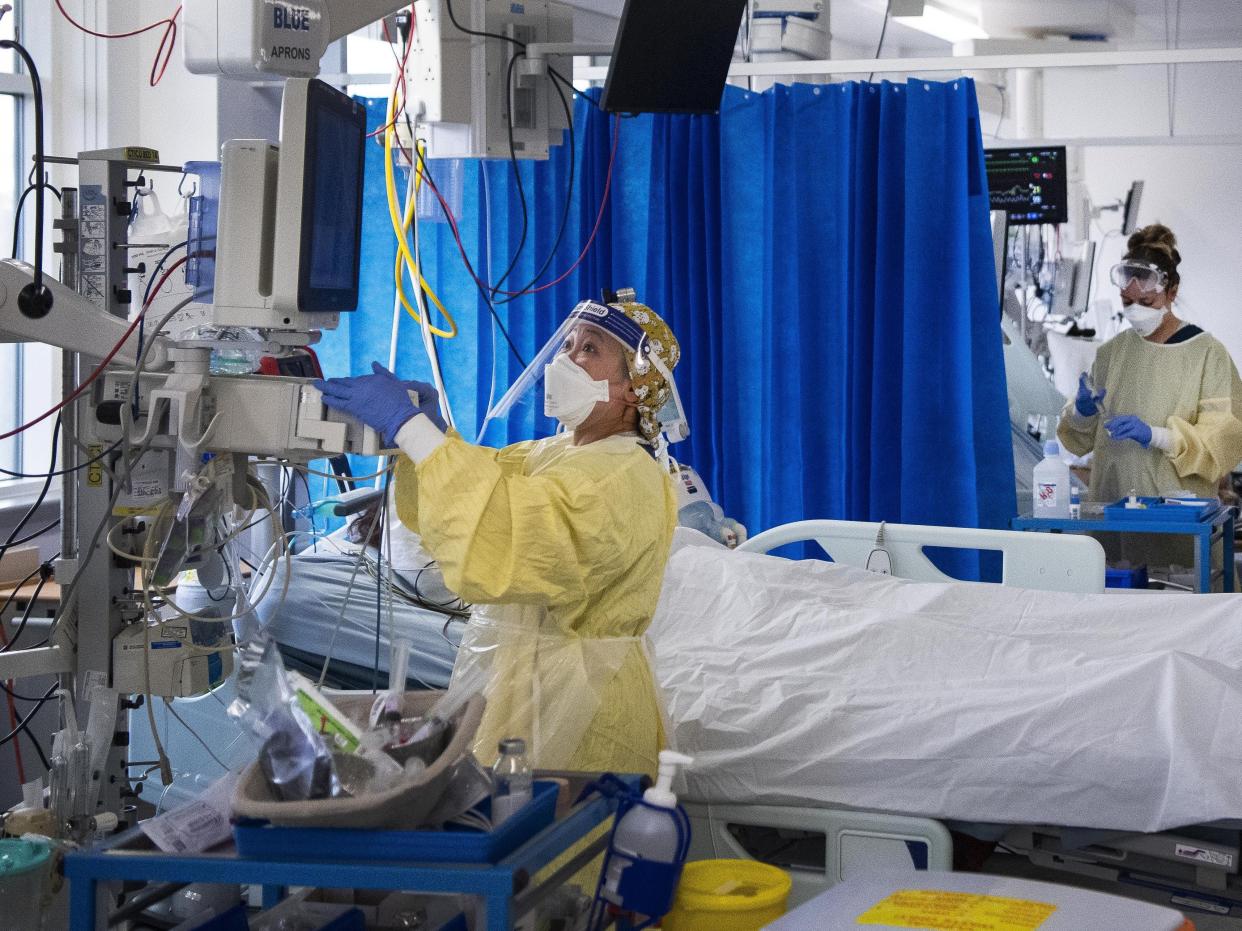Analysis: As Covid cases fall, why are things still tough for the NHS?

The predicted large summer wave of Covid infections and hospital admissions reaching beyond 1,000-a-day has thankfully not materialised.
The latest weekly surveillance report from Public Health England, up to 1 August, delivered more good news on Thursday. It showed case rates across all regions and age groups in England continued to drop.
The highest rate remains among those in their 20s, while teenagers make up the next highest group. Those in their 80s have the lowest rate of infections.
The north of England remains the hardest hit. The highest rate of infection at 354 cases per 100,000 people is in Yorkshire and the Humber.
Many experts were torn over whether the fall in infections we were seeing at the end of July was real, so sharp was the decline. Many just couldn’t bring themselves to accept it. But now we have begun to see the first tentative signs of falls in hospital admissions and bed occupancy levels in the NHS.
Numbers have dropped consistently over the last few days with total patient numbers now below 5,000.
This is solid data on the actual impact of coronavirus on real people, so we can now start to feel confident this latest peak may have passed.
So why then are things so bad in hospitals right now and why are operations still being cancelled across the country?
The Independent has doggedly reported the pressures across the NHS in recent weeks with many frontline staff describing what feels like a real summer crisis.
The reality is that the effect of Covid on the NHS may have a very long tail. The health service went into the crisis with fewer beds, nurses and doctors than most of its western neighbouring countries. The capacity to cope was never really there in the first place.
With just under 900 patients currently in intensive care, that is still a significant chunk of England’s total capacity — more than 20 per cent. Those are beds that cannot be used for hip operations, cancer surgery and other treatments.
On top of that, the end of lockdown and the delays in treating non-Covid patients has, apparently, triggered a tsunami of demand at the hospital front door with A&Es seeing record numbers of patients.
The fragility of the NHS and its usual practice of running on a knife edge was actually hidden by the Covid waves as extraordinary measures were put in place. But now as hospitals get back to juggling multiple priorities the fact we lack enough beds, nurses and doctors, to meet demand is becoming plain to see.
Health secretary Sajid Javid has said we must learn to live with Covid. If that is to happen without seeing a significant deterioration in NHS standards, then an increase in capacity is urgently needed.
New NHS England chief executive Amanda Pritchard must make clear to ministers in her negotiations ahead of the autumn spending review that the Covid fight for the NHS is far from over.
Read More
Why immigration could be Priti Patel’s undoing
Mike Ashley hands Sports Direct over to his prospective son-in-law as the City rolls its eyes
Henry Scott Tuke: Pleasant escapism or iconic images of gay love?
Obama’s birthday party and the challenge of bad-faith criticism
It’s party time for builders as the house price bubble keeps inflating
Meet the driving force behind the Here East innovation centre

